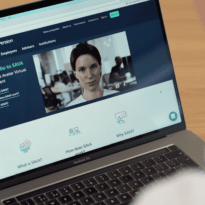Michael Roe, development director, Origo, looks at the current situation with pensions dashboards and why he sees the initiative as a positive disrupter for the industry
In the summer we saw two key appointments by the Money and Pensions Service (MAPS) in respect of the pensions dashboards project. Chris Curry was appointed as Principal of Pensions Dashboards and Angela Pober as Implementation Director of the Industry Delivery Group. We also saw a call for candidates to join a 12-person Steering Group, to help drive the initiative forward to its live date.
Origo has been a keen supporter of dashboards from the outset, as we firmly believe the initiative will be positive for both pension holders and the industry.
Dashboards will ensure that individuals have easy access to key information about the pensions they hold, including which companies manage them and how much they are worth. Having this information at their fingertips will be a breakthrough in engagement between consumers and their retirement savings.
In terms of where we are with the initiative to date and what might we expect, the DWP’s consultation response in April 2019 provided points of clarity, which may be found at the end of this article.
One of the key areas of debate around Pensions Dashboards has been around compulsion and whether schemes should be made to participate from the outset to ensure the initial dashboards launched are of value to consumers. From reports and our discussions with industry participants, we see a broad consensus that this should be so.
However, the current low level of online access and reliance on legacy systems amongst pension schemes and third party administrators, means there is a huge task ahead for the industry to make dashboards fully comprehensive. Hence, sensibly, in our view, the DWP paper proposes that Master Trusts and ‘larger DC schemes’ will be onboarded first. The rest of the industry will follow, building the value of dashboards incrementally in distinct stages, similar to the roll-out of auto-enrolment.
Challenges and change
From our work on the dashboard to date, the hard yards for the industry will be opening up all the administration systems to the APIs required to communicate with the Pension Finder Service. Once those pipes are established, the data being passed back can be enriched over time. There seems little point in going to all the hard work of supporting the finder service and not passing back valuation data if it is available. Even if the dashboard starts with a basic solution to support “what have I got and where is it?”we recommend that the standards support a richer data set from the outset so that the industry does not have to revisit their APIs each time the dashboard is enhanced. Regardless of the decision on starting point, the architecture must be designed and built to support the find request, valuations and other data such as charges as policy evolves. Ultimately, flexible plumbing will provide a roadmap to support different processes and “Open Pensions”.
Dashboards also will be a regulatory driver for pensions schemes and administrators to ensure that their data is correct and accessible. This in turn will see industry participants address their legacy processes, helping drive the industry forward in terms of automation and better use of technology, thereby increased competitiveness and lowering ongoing costs.
Hence, we see pensions dashboards as a significant catalyst for change – not only enabling individuals to better engage with their retirement plans but having a positive and disruptive effect on the industry in general, through increasing operational efficiencies, making the industry more cost effective and, importantly, better able to deliver 21stcentury service to UK pension holders.
Points of clarity
1. The governance body: The Money and Pensions Service (MaPS) will facilitate delivery and ongoing governance. It will establish an Industry Delivery Group formed of stakeholders from across the pensions sector.
2. Compulsion: It is expected compulsion for pension schemes/administrators to provide data to dashboards will form part of the new Pensions Bill. Master Trust Schemes are likely to be early joiners.
3. Funding: The digital architecture and governance will be funded by the Financial Services Levy and General Levy on pensions schemes in addition to some central government funding. Schemes/administrators will bear the cost of providing their data to consumers.
4. State Pension data: Government has said this will be available but we don’t know from when. DWP will fund and deliver this.
5. Single or multiple dashboard(s): The plan is to start with a public Dashboard delivered by MaPs and the to open it out to multiple dashboards thereafter.
6. The architecture: The heart of the solution is a single Pension Finder Service (PFS) plus a digital identity verification process. This will enable an ecosystem of fintech and consumer brands providing innovative and compelling propositions to their customers.
7. Digital ID: A Government-grade standard of identity assurance is required – MaPS will be agreeing a specific solution.
8. What will the dashboard display? There is no decision on this as yet – MaPS will agree the specific data requirements in collaboration with industry. We suggest starting with a simple ‘What have I got and where is it?’ but include a richer data set in the regulations to allow for future development.
9. Retirement income estimate: All consumer research says that this is essential; the question is how will it be calculated? The Institute & Faculty of Actuaries is well placed to advise.
10. Sharing of dashboard for advice and guidance: Government has confirmed that, with consumer consent, access to pensions dashboard data can be delegated to a regulated financial adviser or a guider working for MaPS.
11. Storing of data: The Pension Finder Service stores no data. For privacy and security reasons data is fetched from pension schemes by dashboards as it is needed and is not stored.
12. Implementation date: The original target date of the end of 2019 has been missed. We await an official revised timetable.



































